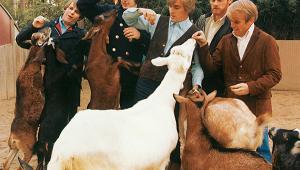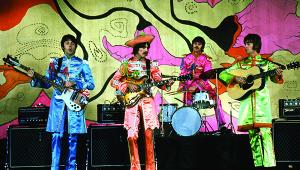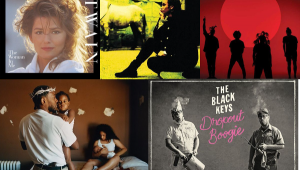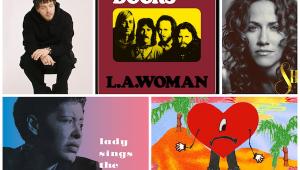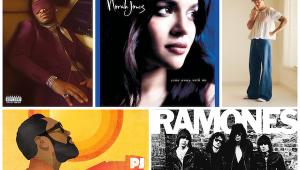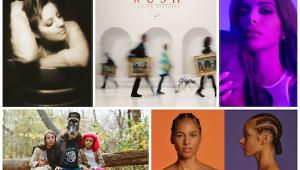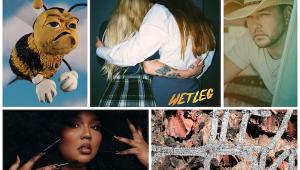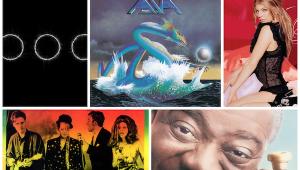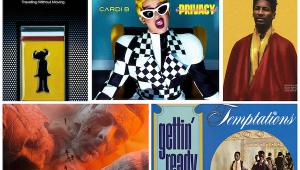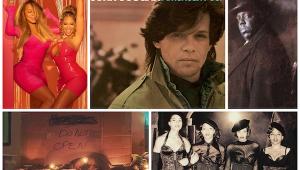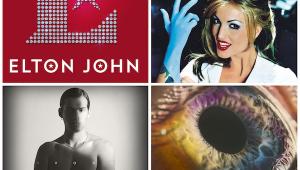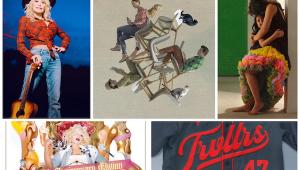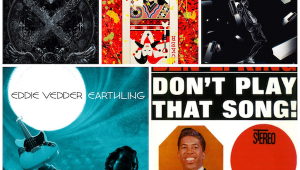Fascinating insights into the creative process and sonic influences behind Act 3. The unexpected emergence of Beach Boys harmonies and the orchestral approach add depth to the album's immersive palette. Letting certain sounds play out, like the amp buzz at the end of "Drink Up," adds a unique touch to the overall cohesion of the record. Truly a testament to the artistry and craftsmanship behind the music geometry dash unblocked
Ryan Ulyate Opens the Curtains on the Atmos Mix of His Grammy-Nominated Solo Album, Act 3

With apologies to the late, great Tom Petty, we do know how it feels to be Ryan Ulyate, thanks to the open book approach the acclaimed producer/engineer has taken with the songwriting and subject matter that dominates his very first solo album, Act 3. Ulyate, Petty’s longtime behind-the-board confidante who helped shaped the ever-widening scope of the sound laid down for the last few decades of TP’s recording career, turned his own lifelong dream into reality on Act 3, a digital-only release that is greatly enhanced by Ulyate’s soundfield-challenging and Grammy-nominated Dolby Atmos mix. (More on the latter in a bit.)
“Well, I think in wearing the songwriter hat, you have to be honest, and you have to write about something that’s important—and that’s just what I did,” Ulyate admits. “I had to write about things that were going on, and it really does reflect where I am in my life. Having gone around the sun a certain amount of times, you start thinking about things. So, yeah, it is a bit reflective, and I don’t think I had any other choice but to write about stuff that was meaningful to me.”
The stats are these: Act 3 was officially self-released digitally on September 10, 2023 in Dolby Atmos MK4 + MP4, and it’s currently available exclusively via Immersive Audio Album. Ulyate created the Act 3 Atmos mix himself in his home studio, and it was mastered by Michael Romanowski at Coast Mastering.
Based on what I’ve heard in Atmos on tracks like the riff-roaring “Game of Hope,” the sneering yet deceptively melodic “How Many More,” and the heavenly harmonies of “Play On,” I think Ulyate may need to rename Act 3 as Act 360.
I’m not the only one enamored with Ulyate’s Atmos touch. In November 2023, Act 3 was nominated for a Grammy for Best Immersive Audio Album alongside George Strait’s Blue Clear Sky, Alicia Keys’ The Diary of Alicia Keys, the God of War Ragnarök (Original Soundtrack), and Madison Beer’s Silence Between Songs. (The Grammy Awards will air on CBS on Sunday, February 4, and if our man Ryan wins his category, we will update this story accordingly!)
Recently, Ulyate, 67, and I got on Zoom together to discuss how he learned about his Grammy nomination, why the immersive Atmos palette gives him the additional space needed to take more of an orchestral approach with his mixes, and why the cover image for Act 3 is the perfect full-circle choice to best reflect his life’s work. A sonic prayer we need to share / We love to play on. . .
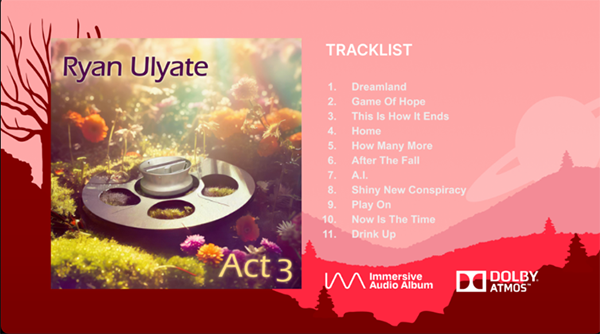
Mike Mettler: First, I want to talk about the Best Immersive Audio Album Grammy nomination you received for Act 3. How did you find out about it?
Ryan Ulyate: I woke up the morning they had the nominations announced [on November 10, 2023]. It was really early in the morning, and I was just scrolling through it. I saw it named there, and I just practically fell out of bed, you know? (chuckles)
Mettler: Realistically, what did you think your chances were of being nominated?
Ulyate: Well, realistically, I think I have a bit of notoriety from the work I’ve done with Tom Petty, so I expected it would probably get attention. But there are just so many entries, so the fact that it made the shortlist was pretty amazing to me.
Mettler: How important was the sequencing of Act 3 for you, even though it’s currently only a digital release?
Ulyate: Sequencing was hugely important—hugely important—and I stressed over it. It still might come out as a physical release, though. I put it out as a digital just to get it out there. Let me put it this way—I love it whenever an album would tell a story, and that’s what I wanted to do with Act 3. I wanted to take people on a journey that started with the first song [“Dreamland”] and ended with the last song [“Drink Up”]. It’s something I was always very conscious of in all the albums I’ve worked on. [Tom] Petty was very conscious of it too. The old story goes, “First song makes you want to listen to the second song. Last song on the first side wants to make you flip the album over, and then the last song on the album makes you want to hear the album again.” (chuckles)
Mettler: How did you and the online company Immersive Audio Album get together for how you released Act 3 digitally? How did that come about?
Ulyate: That really was the secret to this whole thing, for Act 3 coming out and getting qualified [for the Grammy nomination]. Somebody made me aware of them—I can’t remember who—and I went to the site, and I checked it out. For artists, it’s a fantastic thing. It really gives you an opportunity to get your music out there. It’s really simple, and the files sound fantastic. They really do sound good. Jonathan Cornell, the guy who I interacted with there at Immersive Audio Album, was really helpful. He’s a big fan.
Mettler: Yeah, I’ve traded some email with him. Jonathan has a serious engineering background, so he has a firsthand understanding of what needs to be done immersively, I think.
Ulyate: Absolutely—and I can’t say enough about it. It’s a wonderful site, and I’d love to see that kind of thing get stronger. I think it’s just a fantastic way for independent artists to get their stuff out there.
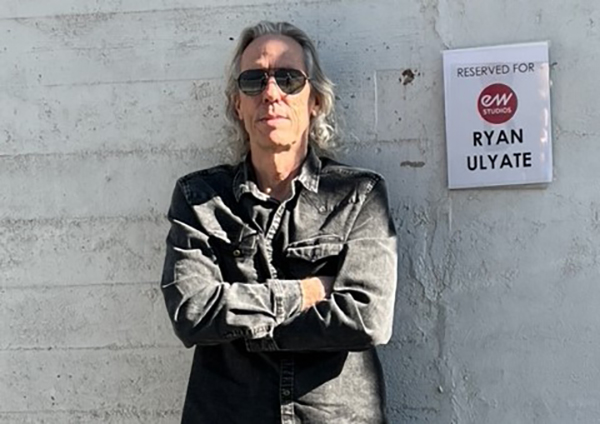
Mettler: Agreed. Now, on the digital versus physical side of things, Act 3 only has digital availability right now, so was there anything related to possible compression-related concerns or other technical factors you had to take into account if it eventually gets released on Blu-ray?
Ulyate: I think as far as the Blu-ray is concerned, it’s a Dolby TrueHD file, so that’s the highest quality. I think the great thing about Atmos is, if you do a mix in Atmos, you are making an ADM BWF file, which is an uncompressed file. From there, it goes to an MP4 and the other formats—and, really, the bandwidth of your streaming service has a lot to do with it sounding good, or not sounding good.
Although, the MP4 is basically still a compressed format—so, in a way, we’re kind of back to where we were when you and I were working very hard on getting hi-res audio out in front of people! (both laugh) Now, it pretty much is—I mean, you can stream stuff on Apple Music, and it sounds pretty darn good if you’ve got a good connection, and if it’s a 24-bit/96kHz file.
Mettler: Right. You can even hear those mixes on good AirPods, actually, if you’re prepared for it. People don’t even realize you can set a default in your iPhone’s Music > Audio settings to have it always play the Atmos version of any song or album if it’s available that way. [MM adds: All you have to do is enable Dolby Atmos > Automatic, and you’re all set!]
Ulyate: Yeah. Yes, that’s exactly right. And I think that, as Dolby Atmos, and Apple’s version of it—Spatial Audio, and all these formats like 360 [Reality Audio]—as these things get more accepted, there’s always going to be the desire to have the highest quality version that’s available. I think right now, that would be the Blu-ray version or the MKV download, which is based on Dolby TrueHD.
I can’t announce it yet, but I am talking to some people about getting a limited Blu-ray out there for Act 3. As an independent, it’s just a little bit more daunting to go through the production of it, and all that stuff. But like I said, I am talking to some people about it, and we’ll see where that conversation goes. The fact is, this project has a bit more visibility, now that it’s been Grammy-nominated.
Anyway, the good news about Atmos is, when you make something in the format, it can scale to whatever playback system it gets played back on. Michael Romanowski, who did the immersive mastering of Act 3, also really helped make sure it translated to every playback format.
Mettler: Atmos—it’s a good thing! (both laugh) On the creative side of things, I love hearing the “found sounds,” as I call them, on Act 3—all the nature sounds and things like how the vocals are layered with all these great harmonies. There are Beatles elements, Beach Boys elements, and there are Pink Floyd elements too. I think you mentioned “Grantchester Meadows,” which is on [November 1969’s] Ummagumma, as being an inspiration because it has a lot of bird sounds on it.
Ulyate: That’s right, yes.
Mettler: I was also thinking of “Cirrus Minor,” which is on the album before that one, the More soundtrack [released in June 1969], and it also has some of that nature stuff in there too. “Cirrus Minor” actually hit me first before I was thinking of “Grantchester Meadows.”
Ulyate: Yeah! It’s really interesting. “Cirrus Minor,” and the More soundtrack, is definitely something I listened to a lot. When I dug deep to find this process of writing music and writing words, I didn’t really know exactly what it would sound like until I finished it—and then you go, “Oh, geez, I can hear the Floyd in that. And I can hear The Beatles in that.” And then The Beach Boys showed up, for some reason. Yeah, it’s so interesting how that happens.
Mettler: And you’re not expecting it, right?
Ulyate: No!
Mettler: Honestly, you weren’t expecting those Beach Boys harmonies to appear like they did—but yet, here they are.
Ulyate: Yeah, I wasn’t—but it’s just that I love doing that kind of stuff, and I thought the immersive palette gave me more space to do things and layer things and take more of an orchestral approach to it. So, rather than a guitar solo, it might be guitar sections. you know? (chuckles) It’s the kind of thing where you can spread things around, and then the thing kind of comes together in your brain.
It was a lot of fun to just add those other elements to the songs and throw a lot of stuff in there. There are definitely a lot of things going on in all these Act 3 songs, but hopefully crafted to where it all still makes a point—and it’s still very cohesive.
Mettler: Oh, I think it’s very cohesive overall. Something else I also like hearing on Act 3 is that, at the end of a number of songs here, you let certain things play out—or, literally, at the very, very end of the record after “Drink Up” ends, we hear something that sounds like amp buzz before it clicks off. Where does that sound come from?
Ulyate: Yeah, you’re right—it was the amp, a Fender amp that I have here. I just let it buzz (laughs), and then I shut it off. I figured that was kind of an appropriate way to end the album.
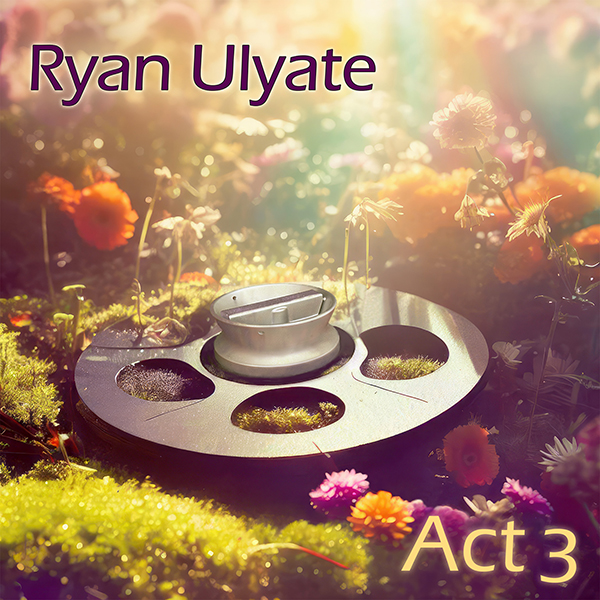
Mettler: I totally agree. You turned it off—but then I want to start over and turn it on again! (both laugh) Anyway, before we go, I have to say that I love the cover art choice that you made for Act 3—the “tape in nature” kind of vibe you’ve got going on there.
Ulyate: I have a good friend who’s an amazing artist, and his name is Kevin Mack. He actually was a visual effects supervisor, and he did a lot of big films. He won an Academy Award [for Best Visual Effects] for a [1998] film called What Dreams May Come. We talked about it, and I wanted to find something that was kind of iconic—especially something that looked really good on a little tiny phone! (laughs heartily)
And for me, the iconic thing for my life was this tape recorder thing, since I always had tape recorders around me. That was kind of the story of my life, because I discovered my dad’s tape recorder when I was six, so I’ve always had tape recorders. Whenever I would have ideas, I would put them down on tape. In the ’70s and ’80s, I had a little Sony cassette recorder, the one that had the stereo mic. No matter what, I always had a cassette or some way of recording these things next to me. So, the idea of showing a reel of tape that’s just kind of evolving—or doing whatever it’s doing out there on the cover to Act 3—seemed to fit me perfectly.
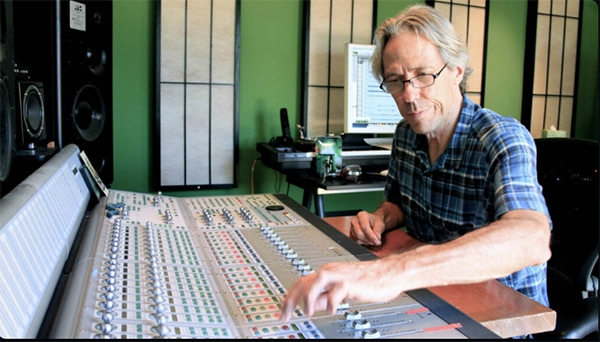
- Log in or register to post comments

